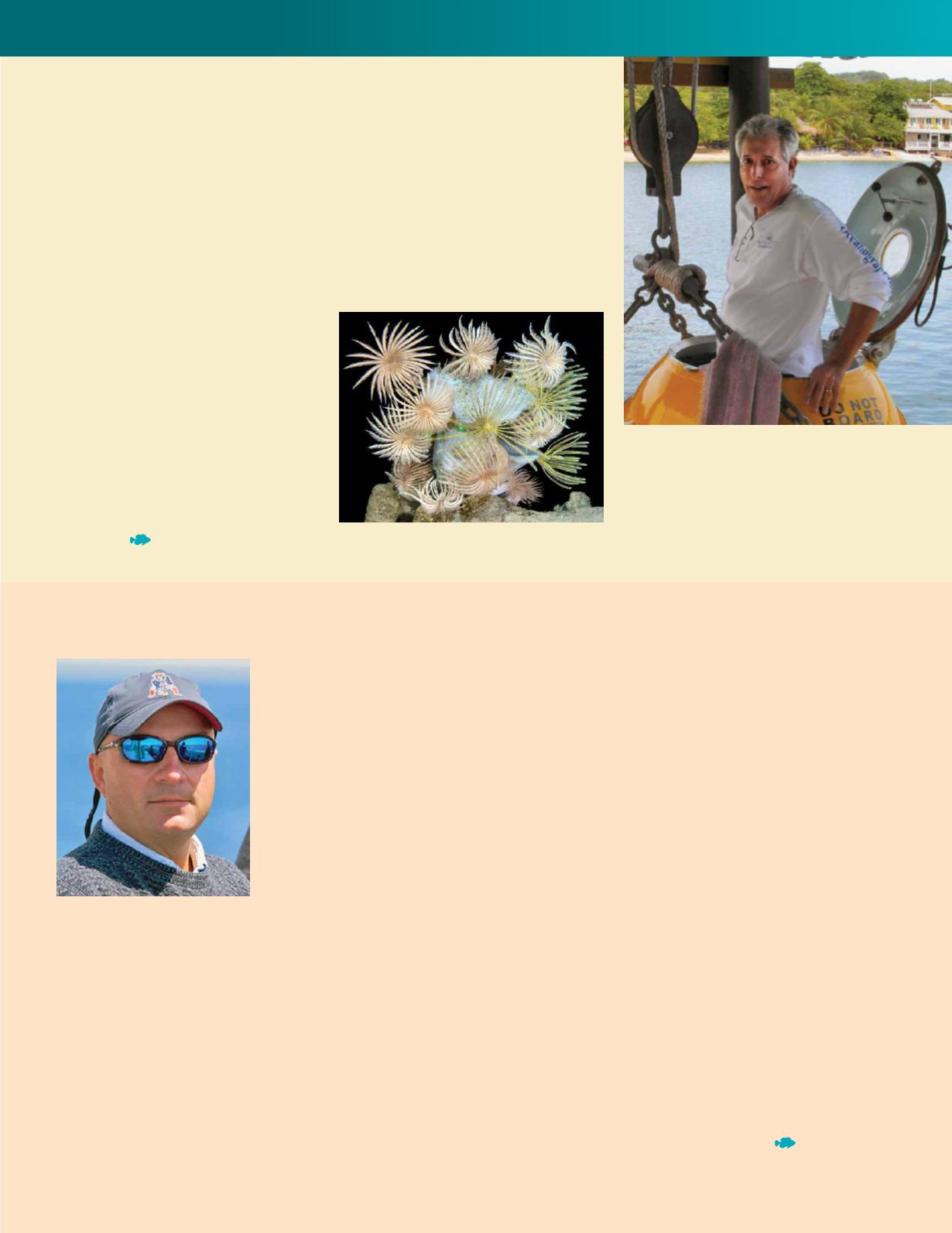
18
OC Professor Studies Crinoids in
Roatan, Honduras
OC Professor
Charles Messing
, Ph.D., recently returned from a research expedition
to the island of Roatan, Honduras, where he made seven dives to depths reaching
2,000 feet using the Roatan Institute of Deep-Sea Exploration submersible
Idabel
to
study the ecology of crinoids—sea lilies and featherstars. This expedition, which
included paleontologists Tomasz Baumiller, Ph.D., from the University of Michigan
and Forest Gahn, Ph.D., from Brigham Young University, returned to some of the
same sites visited last year, which allowed the team to measure growth, mortality,
and regeneration of some crinoids with
pedigrees dating to the Mesozoic Era.
The researchwill contribute significantly
to our understanding of life in ancient
seas. The expedition also examined the
distribution and growth of deep-sea
corals. These expeditions were funded
by an NSU President’s Faculty Research
and Scholarship Grant awarded to
Messing, supplemented this year by
a grant from the National Geographic
Society to Baumiller. The latter will
allow the team to return again
next year.
OCWelcomes New Faculty Member Tracey T. Sutton, Ph.D.
Deep sea crinoids on a sponge
OC Professor Charles Messing, Ph.D., boarding the
submersible Idabel
This summer, the OC welcomed
its newest faculty member,
Tracey T. Sutton
, Ph.D., associate
professor. His research focuses
on the quantitative ecology and
structure of marine ecosystems.
His interests include the biotic
and abiotic processes that shape
marine community structure
and how these phenomena
vary over space and time. He is
currently working on a number
of projects supported by The
National Science Foundation,
The National Oceanic and
Atmospheric Administration,
The Alfred P. Sloan Foundation/Census of Marine Life, and The
Lenfest Foundation/Global Ocean Biodiversity Initiative.
As a contribution to the
Global Ocean Biodiversity Initiative
(GOBI), Sutton, Malcolm Clark, Ph.D. (National Institute of Water
and Atmospheric Research—New Zealand), and Dann Dunn, Ph.D.
(Duke University) convened a 19-member international workshop in
Aberdeen, Scotland, to produce a global biogeographic classification
of the deep-pelagic realm (200 m–10,000 m) of the world ocean.
This workshop was developed to direct attention to this ecosystem,
the largest on Earth, for establishing guideline criteria for oceanic
ecologically or biologically significant areas (EBSAs).
Deep-sea pelagic zones have been so poorly studied
that they are generally not included in monitoring,
management, or conservation planning. The workshop
determined that large areas of the pelagic ocean can be
defined by large-scale, spatially and temporally stable (or
seasonally recurrent) oceanographic drivers. These host
distinct species assemblages share a common history of
coevolution. It was agreed that a mesopelagic zone from
200–1,000 m was reasonable for describing consistent
large-scale environmental characteristics, including light
and physiological constraints.
The workshop was a start, and it is hoped that, in the
future, thesemeetings and others like it can prove useful as
an input to policy planning and management for
conservation and sustainable use of deep-pelagic marine
biodiversity. The
Global Ocean Biodiversity Initiative
is
an international partnership advancing the scientific basis
for conserving biological diversity in the deep seas and
open oceans. It aims to help countries, as well as regional
and global organizations, to use and develop data, tools,
and methodologies to identify ecologically significant
areas in the oceans, with an initial focus on areas beyond
national jurisdiction. The GOBI Secretariat is provided by
Seascape Consultants Ltd, supported and funded by the
German Federal Agency for Nature Conservation. For more
information, please visit
Associate Professor Tracey T.
Sutton, Ph.D.
(see photos on back cover)


